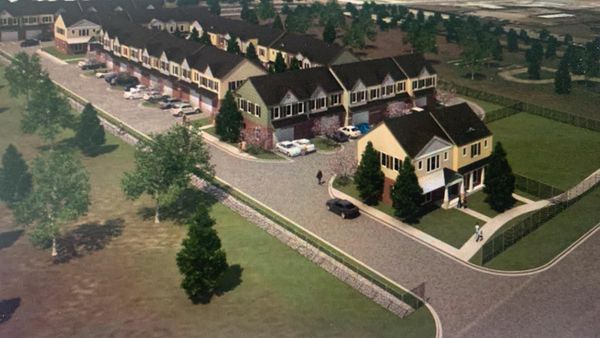The most dangerous housing markets, where housing prices may fall the most

With the housing market correction in full swing, the big question on almost everyone's mind is whether home prices are expected to drop. Mortgage rates are rising, there is growing fear that the country will slide into recession, and inflation continues to soar.
something has to give, right?
However, when it comes to real estate, it's all about location. New Jersey, Illinois and Inland California were the real estate markets most at risk if the state entered an economic downturn, according to real estate data firm ATTOM. New York and Chicago were particularly sensitive.
Meanwhile, the South and Midwest were the least vulnerable.
"Most of the markets that are at the highest risk tend to have higher unemployment and tend to be the least profitable markets," says Rick Sharga, senior vice president of market intelligence at ATTOM. "We are not suggesting that any of these metros are in immediate danger of a housing crash. In the event of a recession, these metro areas will have the highest probability of some fall."
To arrive at the list, ATTOM assessed the vulnerability of 575 US counties by looking at the percentage of homes facing potential foreclosure; the share of houses with mortgage balances higher than the property values; local unemployment; and the percentage of average local wages needed to meet home ownership expenses. Counties had sufficient data to analyze.
The analysis assumes that the Federal Reserve's determination to keep raising interest rates to fight inflation, along with other worrisome economic factors, will push the country into recession. If that happens, some parts of the country will likely fare better and worse than others, similar to what was experienced during the Great Recession.
Nearly two-thirds of the 50 highest-risk counties were in the metropolitan areas of Chicago, New York and Philadelphia and inland California. (Targets include the main city and surrounding towns, suburbs, and smaller urban areas.)
"When you look at the 10 to 15 most vulnerable markets, they tend to be in places like metro New York and metro Chicago, where you have limited affordability and relatively high unemployment," Sharga says.
On the other hand, at least half of the 50 least vulnerable markets were in the South and 14 were located in the Midwest. Tennessee, Wisconsin and Arkansas had the most markets considered safer.
"In the south, the houses are cheaper," says Sharga. “And many of the people moving south are leaving high-priced, high-tax states and looking for more affordable properties [to help block these markets]. They also have very, very strong employment."









































Responses